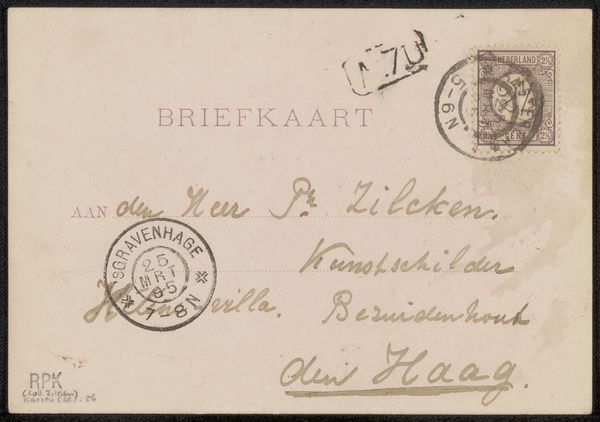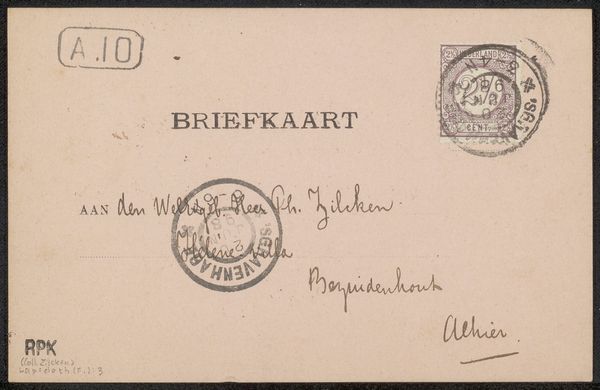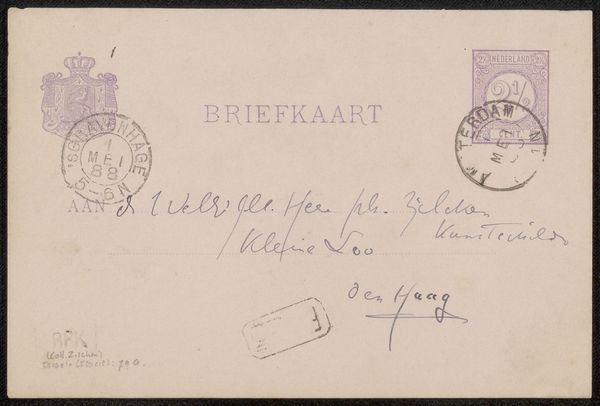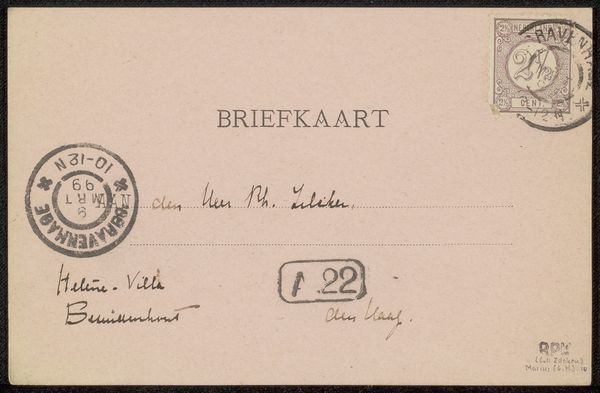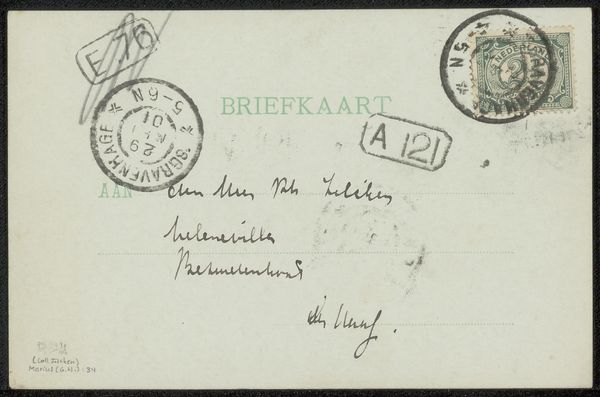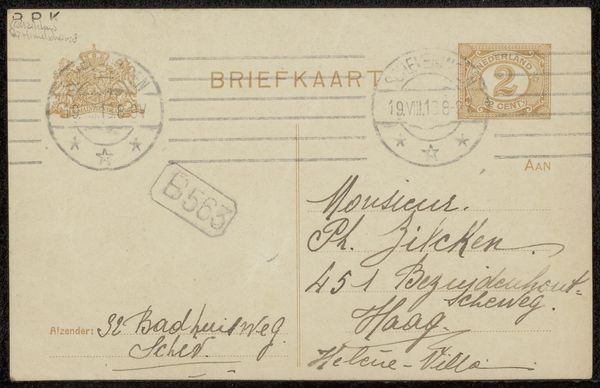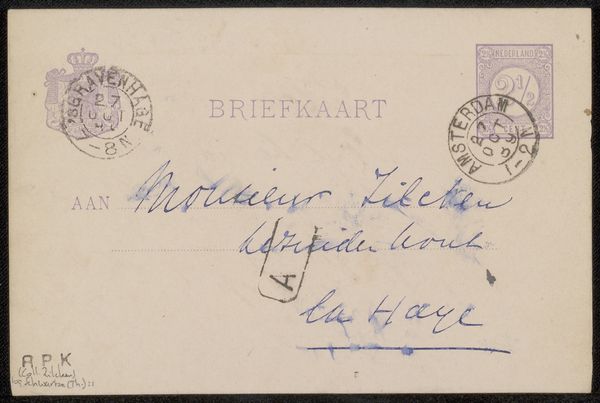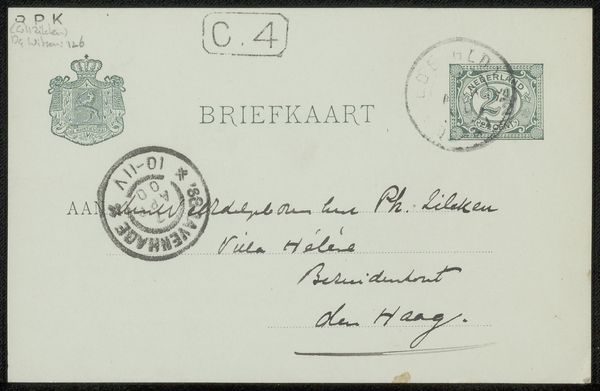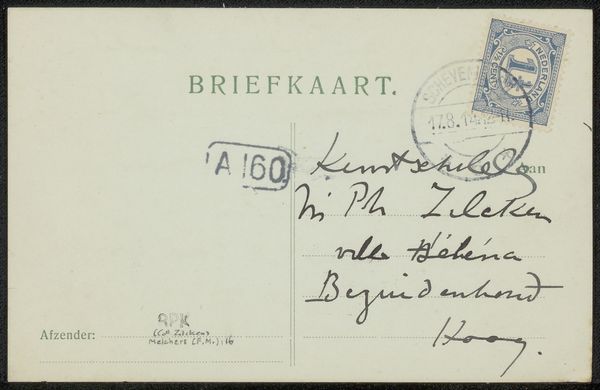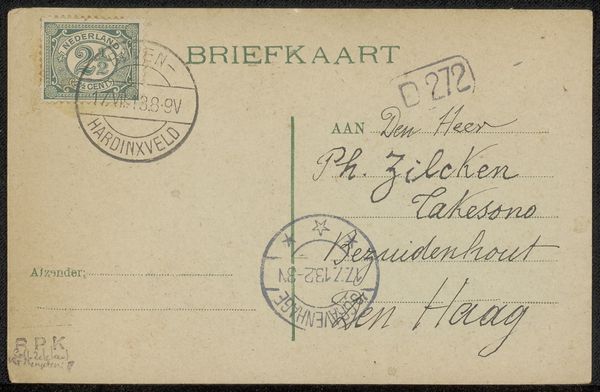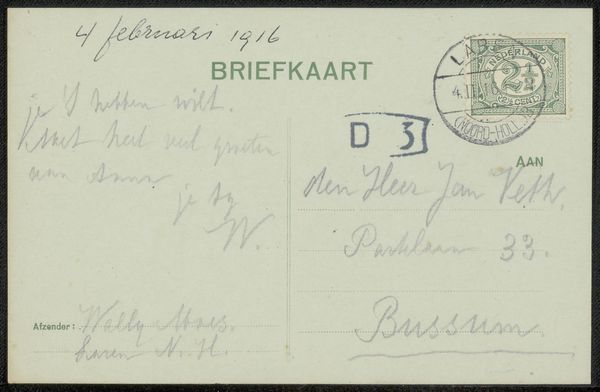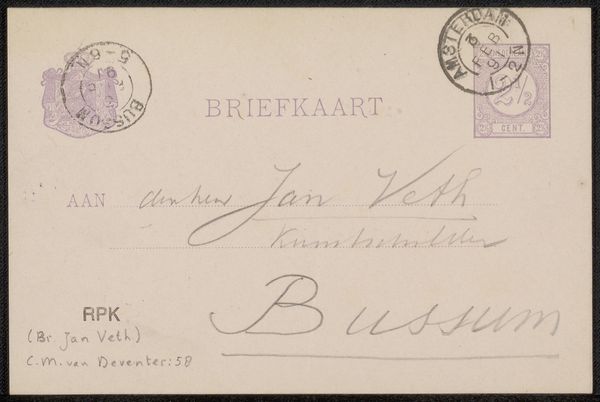
drawing, paper, pen
#
drawing
#
comic strip sketch
#
dutch-golden-age
#
pen sketch
#
old engraving style
#
paper
#
personal sketchbook
#
ink drawing experimentation
#
pen-ink sketch
#
pen work
#
sketchbook drawing
#
pen
#
storyboard and sketchbook work
#
sketchbook art
#
calligraphy
Copyright: Rijks Museum: Open Domain
Editor: This is "Briefkaart aan Philip Zilcken," a pen drawing on paper by Willem de Zwart, created before 1899. It's literally a postcard. I find it interesting for its lack of traditional artistic imagery. What’s there to appreciate beyond its historical function? Curator: It’s fascinating how mundane objects become imbued with significance over time. This postcard, seemingly simple, acts as a visual echo of a bygone era, holding multiple layers of coded meaning for the sender and receiver, perhaps even unconsciously. The postal stamps, the stylized handwriting – what do they evoke for you? Editor: Well, the stamps and the handwriting make it feel very personal and intimate, as if I'm glimpsing a private moment in the past. But I'm unsure how to go beyond this. Curator: Consider the very act of sending a postcard in that era. Before telephones were ubiquitous, this was a primary means of quick communication. What symbols of connection and distance might be at play here? What's conveyed by handwriting versus print? Look closely. The address itself: "Kunty Ohil den, Begijnderkout," and then "Den Haag" underneath, does it suggest anything to you? Is there anything familiar there? Editor: Ah, it feels local and quaint – names, stamps and the Dutch words evoke a strong sense of place. I suppose that place *is* the main image here. I guess a postcard, an image you send to someone, almost represents your culture, writ small. Curator: Precisely. The choice of script, the style of the address – all point to a specific cultural and social context, speaking volumes about the relationship between the sender and the receiver. Even the stamps – government-sanctioned images - become signifiers of national identity and civic life. This little scrap of paper is full of meaning, isn't it? Editor: Yes, it is! I had never considered how much information is conveyed through something so commonplace. It shows that the act of communication itself, its symbols and materiality, can become an art form.
Comments
No comments
Be the first to comment and join the conversation on the ultimate creative platform.
